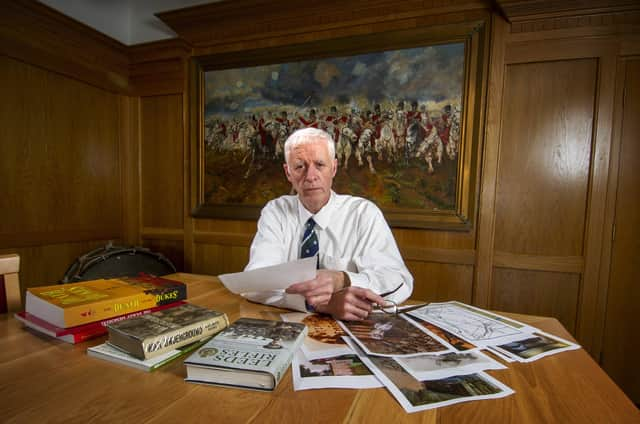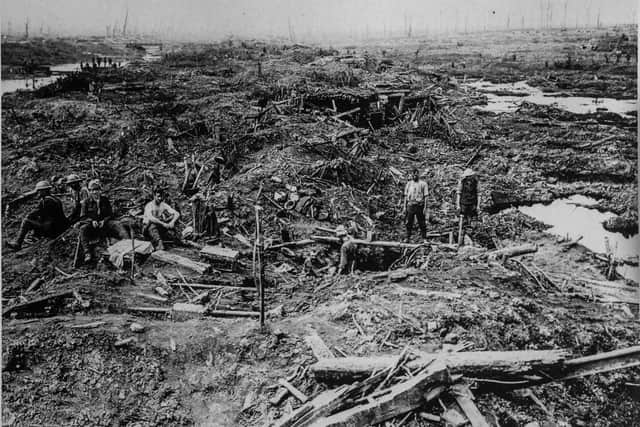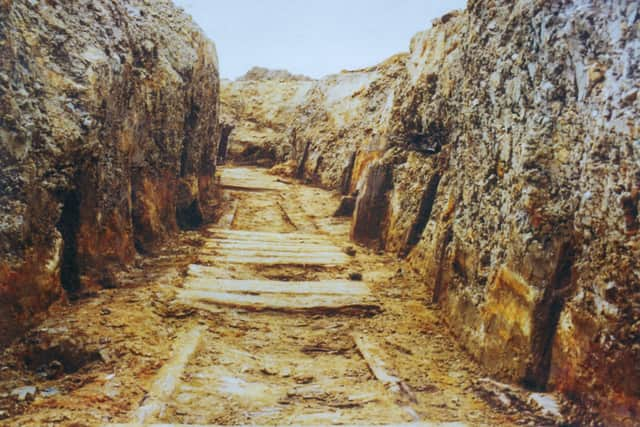Final battle in Flanders Fields to save trench that is forever Yorkshire


The Yorkshire Trench, named after the men from across the old West Riding who dug it, had been the gateway to the horrors of Passchendaele. Resurrected two decades ago, it had stood as a monument and a centre for educating successive generations about the realities of life on the front line. But with its collapse now imminent, a fundraising drive to save it has been launched back in Yorkshire.
Flanders is no longer given over to fields. In the Belgian town of Boezinge, just north of Ypres, they have built an industrial estate over the network of communications tunnels which once connected the front-line trenches. The Yorkshire soldiers named them after places back home: Strensall Road, Leeds Road and Huddersfield Road – all now buried now beneath vast warehouses.
Advertisement
Hide AdAdvertisement
Hide AdBut between the aluminium roofs alongside the Van Leper Canal, lies a piece of the past that time has not touched.


The Yorkshire Trench and Dug-Out had been lost for decades beneath the brambles, until developers were followed on to the site by a team of Belgian archeologists. Amidst the remains of 155 British, French and German soldiers lost in battle and never recovered, they found what had in April 1917 been the British front line.
Using duckboards for a floor and sandbags for walls, just as the soldiers had done, they rebuilt the trenches foot by foot.
“Their work has lasted longer than the First World War itself, but it’s now in danger of falling back in on itself. What we’re trying to do is raise funds to put it back into a condition where people can visit it again,” said John Morrison, a reservist with the Yorkshire Officers’ Training Regiment at Carlton Barracks in Leeds, who has organised educational trips to the site for officer cadets.
Advertisement
Hide AdAdvertisement
Hide AdThe Yorkshire Trench earned its name after it was taken over and improved upon by the 49th West Riding Infantry Division, made up of men from Leeds, Sheffield, Huddersfield, Halifax and the surrounding towns. Soldiers of the 173rd Tunnelling Company of the Royal Engineers, many from the Yorkshire pits, had helped the French forces dig it in the first place.


“These are people who were probably digging out a sewer back home one Friday and by the following Thursday were digging tunnels in Flanders Fields,” said Mr Morrison, who estimates that the trench will cost around £100,000 to repair. Some of the money will come from the town of Ypres, which owns the site, and from the In Flanders Fields Museum, which has curated it. A crowdfunding page has been created online to contribute towards the balance.
“A lot of people had gone out of their way to get the archeological dig done after the trench was rediscovered, and they are understandably upset that it has now deteriorated into its current condition,” Mr Morrison said.
“This is part of our Yorkshire heritage. It is on this small piece of Belgian land where so many British soldiers, many from Yorkshire, fell in battle. It is in remembrance of them that we must repair, and preserve this historic trench and show the true reality of war.”
Advertisement
Hide AdAdvertisement
Hide AdThe remains of the soldiers recovered from the excavated trench were reburied with full military honours in nearby cemeteries but only one, a Frenchman named François Metzinger, could be identified.
The Yorkshire Trench first saw heavy fighting in 1915, with the loss of around 500 lives. From 1916 it was on the first line, and the following year its dugout was HQ for two Battalions of the Royal Welch Fusiliers at the start of the Battle of Passchendaele.
An army record contains the entry: “Front line is in dreadful state. Line only held by a series of outposts disconnected from each other. Trenches mostly falling to pieces.”
The fundraising page for the trench’s restoration is at www.justgiving.com/crowdfunding/yorkshiretrench.
Advertisement
Hide AdAdvertisement
Hide AdSupport The Yorkshire Post and become a subscriber today. Your subscription will help us to continue to bring quality news to the people of Yorkshire. In return, you’ll see fewer ads on site, get free access to our app and receive exclusive members-only offers. Click here to subscribe.
Comment Guidelines
National World encourages reader discussion on our stories. User feedback, insights and back-and-forth exchanges add a rich layer of context to reporting. Please review our Community Guidelines before commenting.